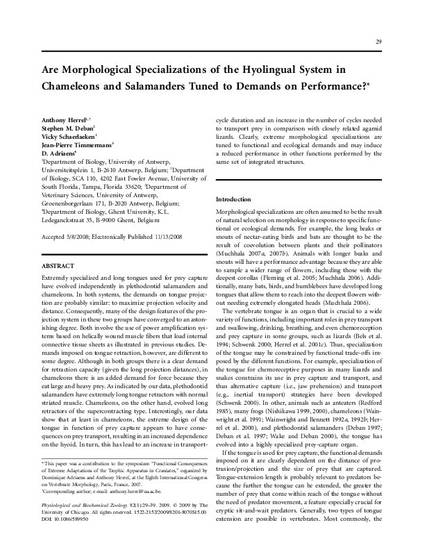
Extremely specialized and long tongues used for prey capture have evolved independently in plethodontid salamanders and chameleons. In both systems, the demands on tongue projection are probably similar: to maximize projection velocity and distance. Consequently, many of the design features of the projection system in these two groups have converged to an astonishing degree. Both involve the use of power amplification systems based on helically wound muscle fibers that load internal connective tissue sheets as illustrated in previous studies. Demands imposed on tongue retraction, however, are different to some degree. Although in both groups there is a clear demand for retraction capacity ( given the long projection distances), in chameleons there is an added demand for force because they eat large and heavy prey. as indicated by our data, plethodontid salamanders have extremely long tongue retractors with normal striated muscle. Chameleons, on the other hand, evolved long retractors of the supercontracting type. Interestingly, our data show that at least in chameleons, the extreme design of the tongue in function of prey capture appears to have consequences on prey transport, resulting in an increased dependence on the hyoid. In turn, this has lead to an increase in transport-cycle duration and an increase in the number of cycles needed to transport prey in comparison with closely related agamid lizards. Clearly, extreme morphological specializations are tuned to functional and ecological demands and may induce a reduced performance in other functions performed by the same set of integrated structures.
Physiological and Biochemical Zoology, v. 82, no. 1, p. 29-39.
© 2009 by The University of Chicago.
Available at: http://works.bepress.com/stephen_deban/1/
